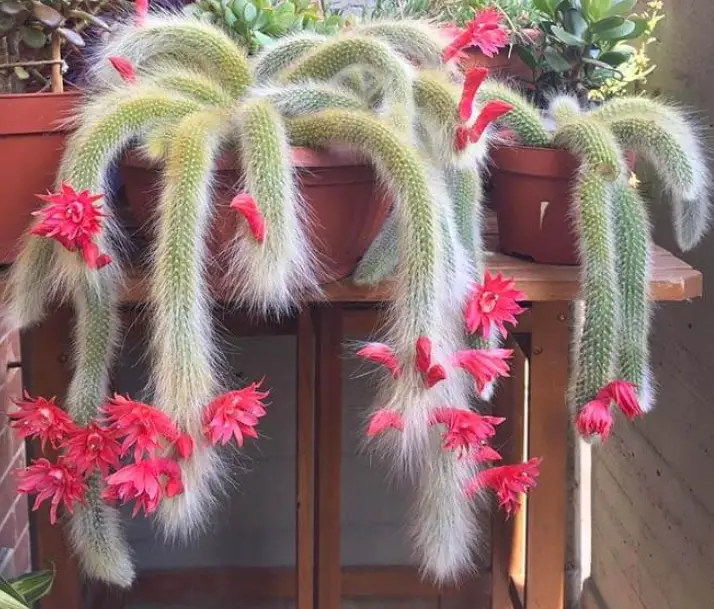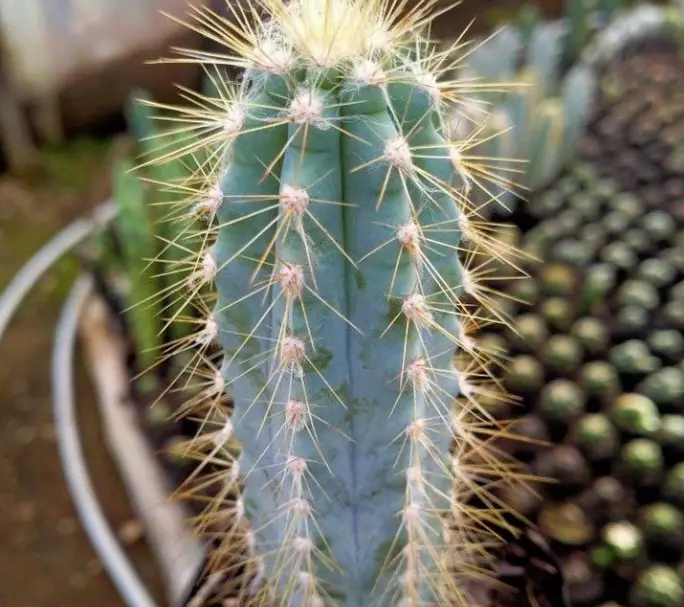Overwatered vs. Underwatered Cactus – Differences + Fix
Many houseplants die as a result of improper watering. Cacti aren’t comfortable when overwatered and neither when the soil gets too dry. Underwatered and overwatered succulents may show the same symptoms, but you must know the difference to fix it.
An overwatered cactus has much water in the soil, causing the roots to suffocate and rot. On the other hand, underwatered cactus lacks enough water in the soil, and the plant wilts due to dehydration.
In both cases, the affected plant ends up wilting.
Here is a summary of key differences between overwatered and underwatered cacti.
| Underwatered Cactus | Overwatered Cactus |
| The plant may take some time before it dies. | The plant dies within a short period of time. |
| It is easy to save the affected plant, and the chances of recovery are high. | Chances of recovery are low, thus not easy to save an overwatered cactus. |
| The plant roots become dry and brittle to the touch, and they can break if pressed. | The roots of the affected plant become mushy or rotten. |
| The soil becomes hard and dry. | The soil is waterlogged and damp. |
| The whole plant gets wilted and eventually dries out. | The whole plant shrivels and gets soft. |
| The plant may remain upright, supported by brittle roots. | The cactus may fall over when the roots get mushy and rotten. |
| There is no likelihood of a bad smell around the plant. | There is a bad smell around the plant as parts decompose. |

Overwatered vs. underwatered Cactus- Differences
Here is a detailed comparison of underwatered and overwatered cacti plants.
Color appearance
Both underwatered and overwatered cacti may become discolored. The leaves and stems may start yellowing and eventually turn brown or black. Overwatered Christmas cactus, for example, will turn reddish or purple before it starts wilting.
Cactus roots typically die when they don’t get oxygen due to excess water in the soil or when they get excessively dehydrated. Cactus discoloration indicates the plant is not receiving essential supplies like water and nutrients due to the damaged roots.
State of the roots
Inspecting the roots is the best way to tell if a cactus is overwatered or underwatered. When there is insufficient moisture in the soil, the root cells get dehydrated and die. This makes them feel dry and brittle to the touch. They can even brake into pieces if you press on them.
On the other hand, the Cactus gets squishy when overwatered. The roots are dark or brown and very mushy. Waterlogged soil prevents oxygen from reaching roots, making them die and rot. Additionally, fungi and bacteria that cause root rot thrive in excessively wet soil.
Condition of the soil
When overwatered, the soil feels soggy or damp, and you can easily dip in a finger. You may also notice a bad smell from the soil due to the rotting roots.
On the other hand, underwatered soil is extremely dry or dusty. In some cases, the dry potting soil won’t absorb water. It completely separates from the pot, leaving a space where water runs through to the bottom without reaching the roots.
Plant recovery
It is easy to save underwatered succulents, unlike overwatered ones. Cacti prefer drier soil, thus making it easy to recover from drought or dehydration. An overwatered cactus hardly recover from the problem unless you remove the damaged roots and repot them in a fresh soil mix.
How to fix underwatered cactus
Watering alone should be able to revive an underwatered cactus. However, blasting the plant with water may drown the weak roots and cause the plant to die. Gently mist the plant for two to three days; by the end of one week, it will start showing signs of recovery.
Once the succulent has recovered, place it in a dish half filled with water so the plant can absorb water from the bottom. If bottom watering does not reach the top, just water the plant from above without wetting the stems or leaves.
Generally, cacti should be watered when the soil is completely dry. However, don’t delay the watering until the plant starts wilting.
How to fix an overwatered cactus
To save an overwatered cactus, you can simply stop watering it until the soil dries completely. This approach won’t work if the roots are badly damaged. You’ll have to remove the plant from the soil, cut off the damaged roots, and repot it in a fresh soil mix.
Be sure to use a well-draining soil mix for cacti or succulents and a pot with a drainage hole. If you decide to reuse the pot, clean and disinfect it to prevent the spread of disease.
Final Thought
Succulents aren’t thirsty plants; they can store plenty of water in their stems and leaves for many days. Cacti are prone to root rot when overwatered. Grow them in a well-draining pot and soil and water only when the soil is completely dry.
My name is Diane M Lewik, and I am the founder of this website. I am a degree holder in plant biology from the University of California – Berkeley. Over the years, I have cultivated a vast collection of succulents and I have learned a great deal about how to grow and care for these unique plants. Feel free to ask any questions in the comment section below.





